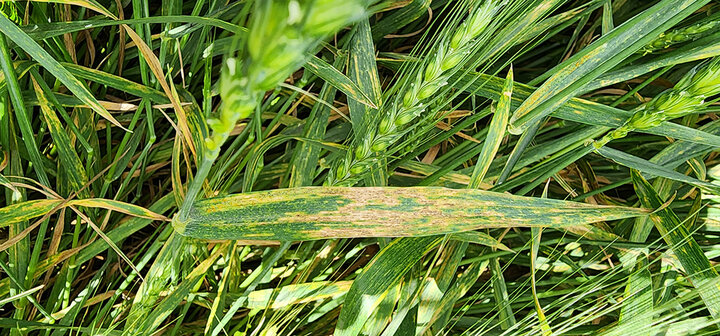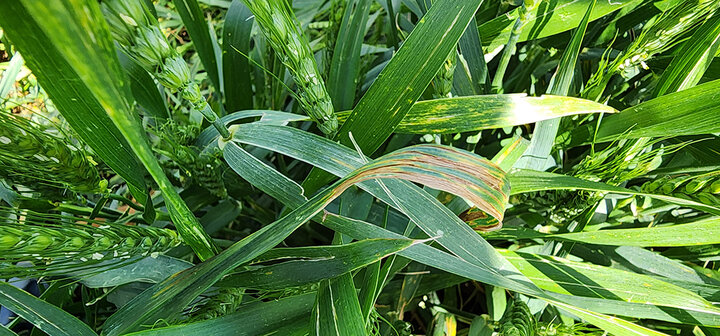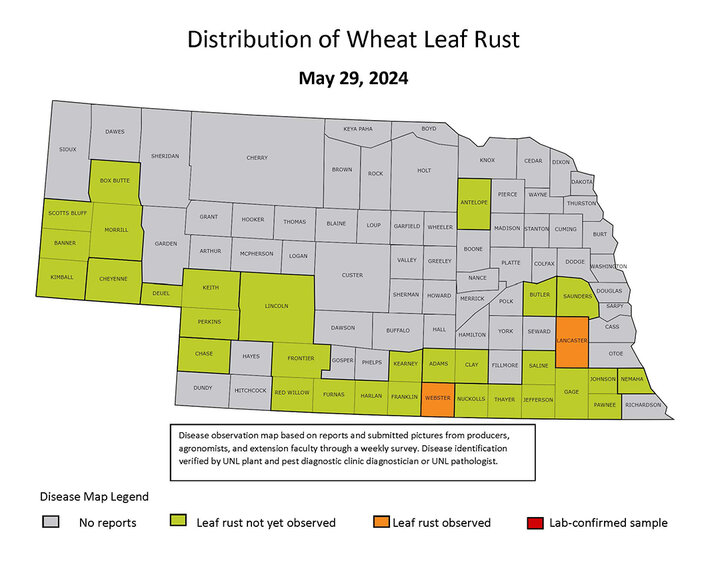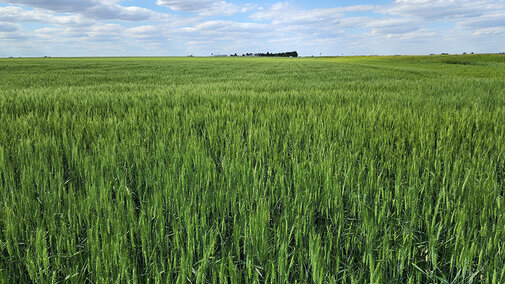Wheat disease surveys in south-central Nebraska on May 28 showed that growth stage was at heading complete, flowering, or past flowering (Figure 1). Stripe rust was severe and widespread within fields planted with susceptible varieties that have not been sprayed with a fungicide (Figure 2). In some spots within fields, stripe rust had advanced from the uredinial stage (the yellow stripes, Figure 3) to the telial stage (Figure 4).



Other diseases observed at low, moderate or severe levels were Septoria tritici blotch (Figure 5) and bacterial streak (Figure 6), also known as black chaff when symptoms appear on wheat heads.


As of May 29, stripe rust had been confirmed in one additional county from last week (Figure 7) and leaf rust had been confirmed in two counties (Figure 8)


Management
In fields with susceptible varieties that have not been sprayed with a fungicide by now in the eastern half of Nebraska, stripe rust and Septoria tritici blotch have developed to incidence and severity levels where it is too late to apply a fungicide and achieve effective control. In many of the fields, wheat is past the flowering growth stage and therefore pre-harvest label restrictions prohibit fungicide application, depending on the specific fungicide.
In western Nebraska, including the Panhandle, if the wheat crop is still at the heading or early flowering growth stage and stripe rust is present at low levels, a fungicide application will be effective in controlling the disease and preventing or reducing yield loss.
Wheat Disease Survey
Please contribute to the 2024 rust tracking map to help Nebraska Extension monitor the movement of stripe and leaf rust in Nebraska.

